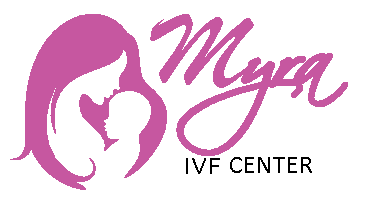In vitro fertilization, or IVF, is an assisted reproductive technology involving the fertilization of a human egg with sperm outside of the body. The entire procedure takes place in a laboratory. Couples undergo this procedure for various reasons, including lack of fertility in one of the partners, underlying health conditions, and more. This procedure is specifically beneficial for couples facing challenges in terms of diminished ovarian reserve, egg quality, or any genetic condition they wish to avoid passing to their children.
Here’s the step-by-step process of how this treatment works.
Evaluation of the Recipient
A thorough medical and reproductive history of the couple is evaluated, including their complete general physical examination and pelvic examination to rule out abnormalities that may affect the outcome of pregnancy. It is also suggested to undergo endocrinological investigations that may affect the potential of fertility and subsequent pregnancy prognosis.
In addition, you may be recommended to undergo relevant serological screening tests, such as HIV and hepatitis, syphilis, tuberculosis, chlamydia, and more. In females, the evaluation of the uterine cavity becomes necessary. An ultrasound is carried out to rule out the presence of any uterine or ovarian pathology, such as polyps, fibroids, ovarian cysts, uterine malformations, and more.
Selection of the Donor
An anonymous donor is selected, and screening of the gamete donors is carried out. The doctor orders all the relevant investigations important to determine the health of the eggs and other factors. Egg donors should be legal adults and healthy to avoid any issues with the pregnancy. Just like the couple, the donor undergoes a thorough examination, including evaluation of personal and medical history, detailed sexual history and family disease, genetic testing, and more.
Counseling of Recipient Couple and Donor
Once all the tests are carried out, the doctor starts counseling both the couple and the donor about the benefits and risks of the procedure. They will also tell you detailed laws about the procedure to double-confirm the decision taken by you. As per guidelines, the process of gamete donation should be kept confidential.
You will be counseled about the pros and cons of IVF, and the doctor will also help you to prepare yourself mentally so that the entire process is carried out smoothly. It is suggested to be patient and positive with each step to avoid the risks of complications. It is also suggested to regularly visit the doctor or their team to avoid any risks due to ovarian stimulation.
Consent of the Parties
The consent of both parties is very important to perform IVF. Both the recipient couple and donors should say yes to the procedure.
Ovarian Stimulation of the Donor
After the tests, counseling, and consent, the egg donor goes for ovarian stimulation with the help of hormonal treatment.
Oocyte Retrieval of the Donor
Once the ovarian follicles have reached the desired size, the doctor gives trigger medication to attain final oocyte maturation and ovulation. After triggering oocyte maturation, retrieval is performed at an appropriate time under anesthesia.
Endometrial Preparation of the Recipient
The procedure involves hormonal treatment to prepare the endometrium. The endometrium refers to the inner lining of the uterine cavity, where the embryo is implanted to favor implantation in the recipient.
Invitro Fertilization and Embryo Development
The doctor obtains a semen sample from the sperm donor. In order to form a fresh embryo, the best sperm is selected and injected into the oocyte. It is carried out through the technique called intra-cytoplasmic sperm injection. The embryo is grown up to its blastocyst stage, where it attains maximum implantation to ensure a high success rate.
Embryo Transfer to the Recipient
For this procedure, either the fresh embryos created from a donor egg and donor sperm can be utilized, or cryopreserved embryos previously created from the donors or couples undergoing IVF are utilized. The embryos are loaded into the catheter and then transferred into the uterus of the recipient under the guidance of ultrasound.
Pregnancy Test
After a few days of transfer, the doctor performs a blood test to measure HCG levels in the blood to determine if the pregnancy result is positive or negative. Depending on the value of HCG, the test might be repeated after 2-3 days. The patient is then scheduled for an ultrasound after 4-5 weeks to evaluate pregnancy.
Throughout the time, the recipient continues to take hormonal supplements as directed by the doctor. It continues until the 12th week of pregnancy.
What is the Success Rate of IVF Treatment?
The success rate of IVF treatment is high. At the same time, it is characterized by certain factors, including the following.
- In recipients, the success rate of IVF treatment is characterized by the age of the female, endometrial thickness, quality of the embryo, uterine pathology, and more.
- In donors, the success rate of this treatment is influenced by the age and the number of mature oocytes retrieved.
Takeaway
As a couple, you can take advantage of IVF treatment and start a happy family after understanding the pros, cons, and the detailed procedure. Discuss all the dilemmas and doubts with the experts to make the best decision.


